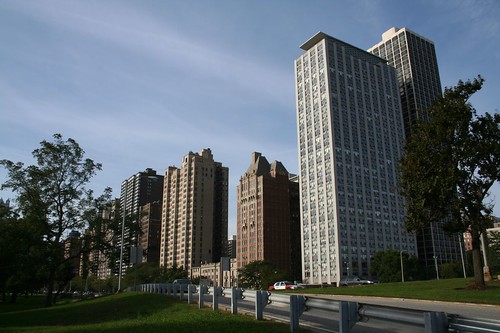
One of the first and most obvious lessons here is the evolution of scale. Just contrast the historicist towers - generally from the 1920s and earlier - with their post-war successors. The size of the latter tends to be hugely inflated.

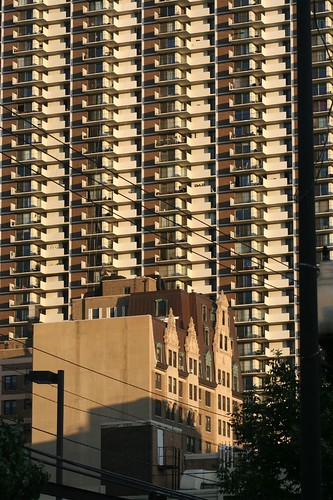
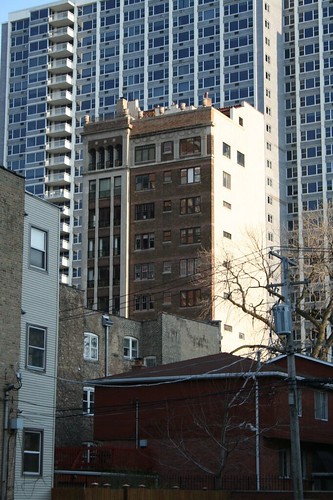
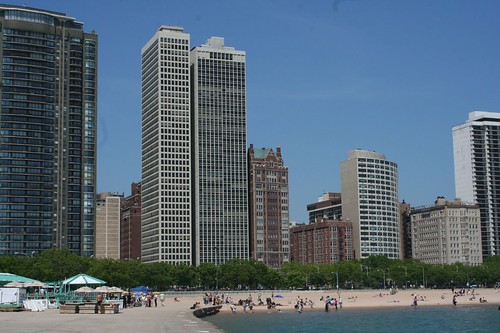
And yes, the post-war buildings often are a lot uglier. The Modernist ethos of minimalist design soon transmogrified into an ethos of minimal designing. On the flip side, they usually have more generous windows - more light coming in, better views looking out.
But not all pre-war high rises are delicate little flowers! Some are massive chunks of masonry.
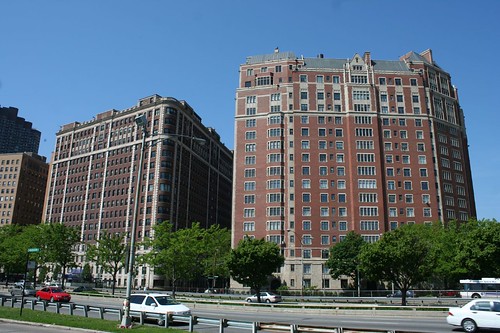
3750 N. Lake Shore Drive / 1540 N. LaSalle
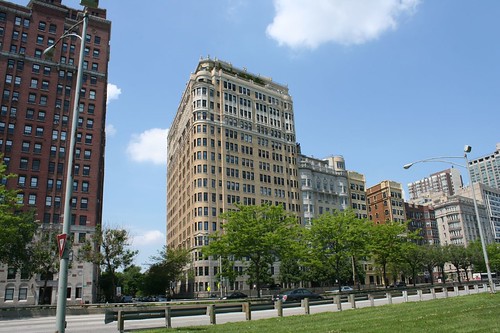
The lakefront, being Chicago's greatest amenity, has long attracted its greatest wealth. Apartment houses were dressed up to the nines, as if for a night on the town.

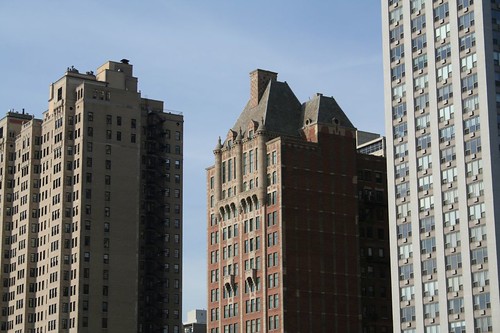
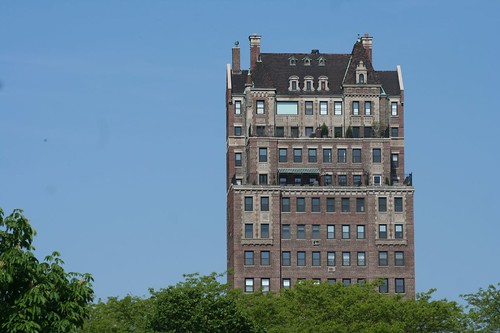
The Belden-Stratford Apartments, a U-shaped Beaux Arts courtyard building with a Second Empire mansard roofline, is one of my favorites.
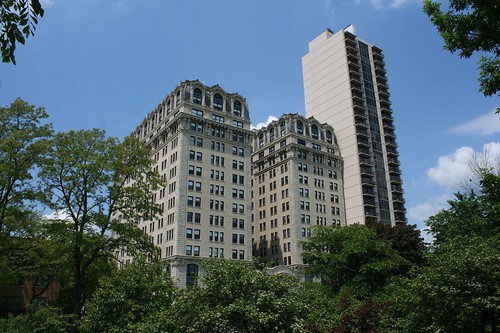
1922 - Fridstein & Company
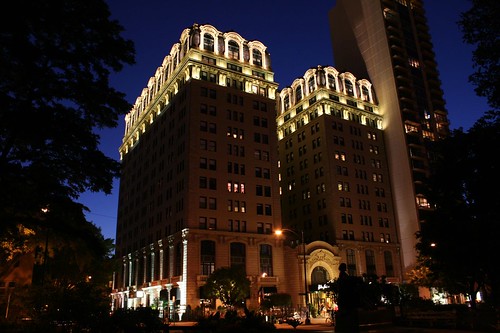
Some of the MidCentury buildings are interesting in their own right.
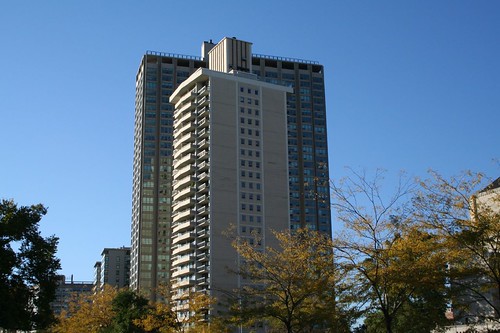
3470 N. Lakeshore Drive - Raggi & Schoenbrod, Inc., 1967
This one, at Sheridan and Bryn Mawr, is one of the finest towers on the lakefront. Its clean horizontal banding make it an outstanding example of International style architecture.
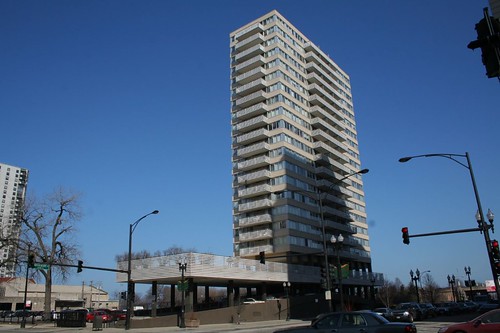
"The Statesman" - 5601 N. Sheridan - Milton Schwartz & Associates, architects, 1964
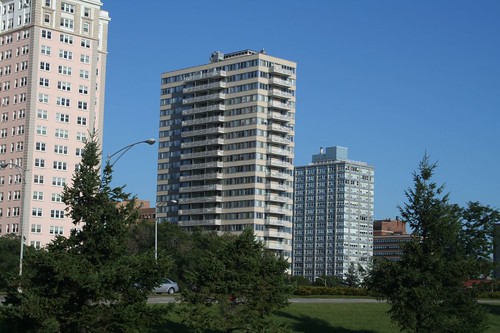
And this pair of conjoined towers may look like an overmassed monstrosity, but take a longer look. There's a lovely offset grid of windows, and those two mechanical penthouses on top, with their curved brick walls, just make the whole thing come together. The penthouses cap off wide brick bays that act like visual wrapping paper - a pair of bows tying the whole package together.
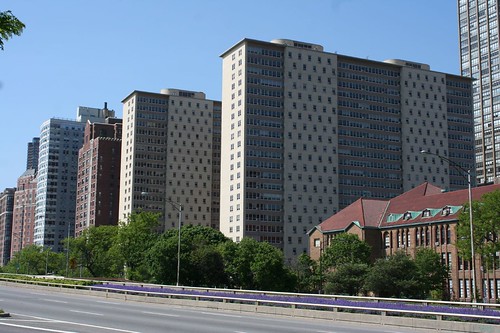
3950 N. Lake Shore Drive - Shaw, Metz & Dolio, 1957, originally with rooftop dining. Built on the site of 1910 Richard T. Crane mansion.
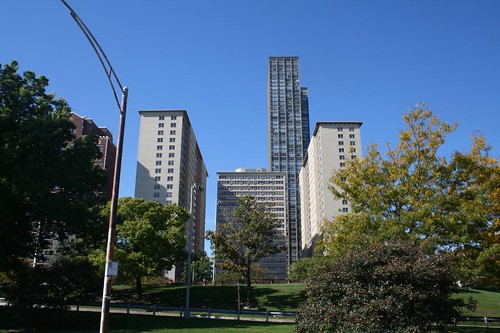
And whatever you think of it, you surely must admit that it's far better than the dreadful concrete skeleton that stands behind it.
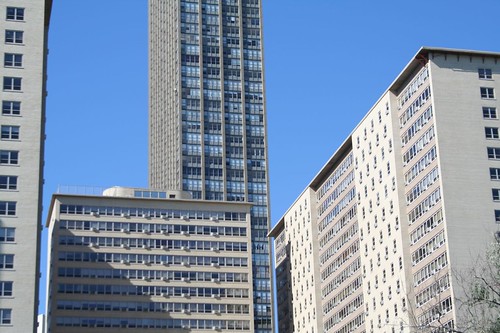
The towers tend to get shorter as one moves further north. Here's a couple of my favorite Rogers Park high rises, long past Lake Shore Drive's end.
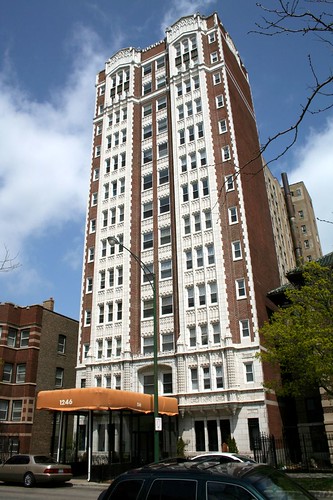
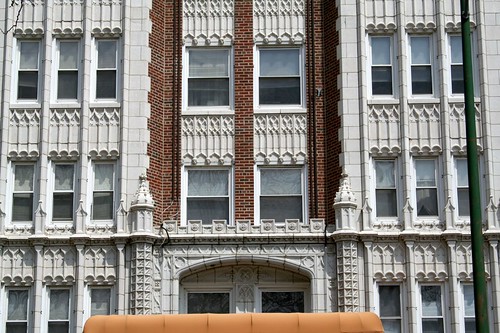
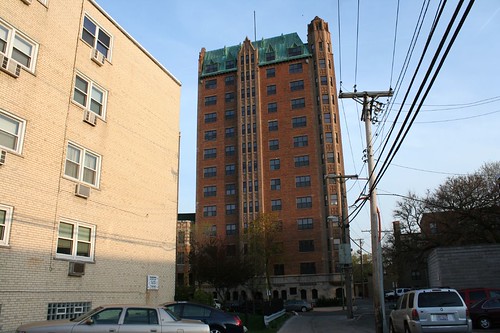
The Farcroft - 1337 W. Fargo Avenue - Charles Wheeler Nicol
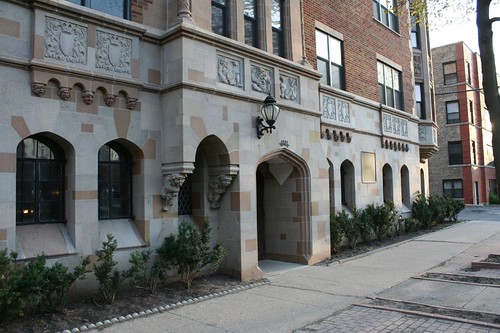
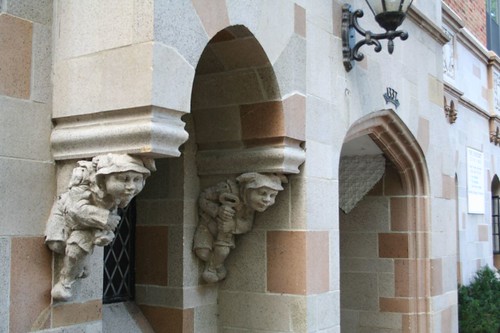
Learn a bit more about this last one, with its delightful bosses, here.
5 comments:
Wow, this is some of your best photography ever, Rob.
Just a quick note to say I love reading your blog. I grew up in Skokie, but now live downstate. I'm tempted to go on a few architectural tours of chicago this spring when the weather is nicer... inspired by your writing!
http://www.flickr.com/photos/30885260@N06/5169938773/
Not quite the lakefront, but a Milton Schwartz building.
I'm excited to read more through your blog. I've never fully appreciated or especially liked the mid-century space-age styles (the LSd towers you highlight here, the Harwood Heights / Skokie one-story commercial and cream brick split levels leave me cold) but your photos have already given me reason to pause and look a little more closely.
The contrast of post- and pre-WWII towers is dead on, but i'd like to see how those pre-WWII towers were received as they too loomed over the pre-steel framed landscape of the 1900's. The scale is relative: Did the critics of the era lament at the oppressive scale of these 20-story behemoths, much as we do today with a lot of the glass-skinned 50-story yawners today?
Post a Comment